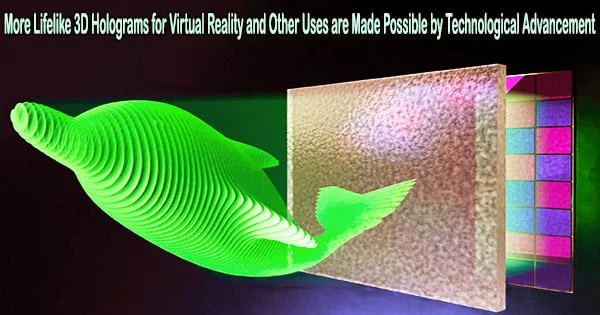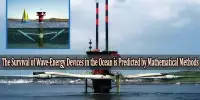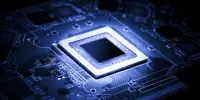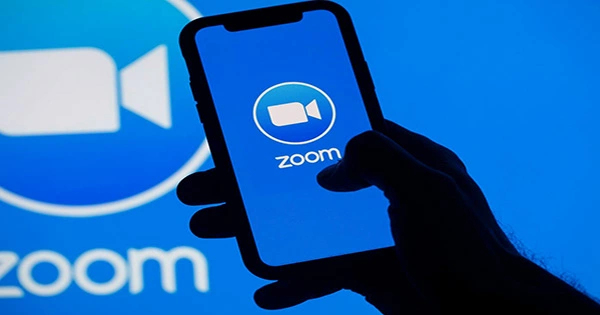3D holograms, also known as three-dimensional holograms, are visual representations of objects or scenes that appear to be three-dimensional and can be viewed from different angles. Unlike traditional two-dimensional images, holograms create an illusion of depth, allowing viewers to perceive the objects as if they were physically present.
A novel technique for producing dynamic, ultrahigh-density 3D holographic projections has been created by researchers. This kind of hologram could enable realistic reconstructions of the world around us for use in virtual reality and other applications by cramming more details into a 3D image.
“A 3D hologram can present real 3D scenes with continuous and fine features,” said Lei Gong, who led a research team from the University of Science and Technology of China. “For virtual reality, our method could be used with headset-based holographic displays to greatly improve the viewing angles, which would enhance the 3D viewing experience. It could also provide better 3D visuals without requiring a headset.”
It is necessary to project images with a high pixel resolution onto numerous subsequent planes, or layers, that are tightly spaced in order to create a holographic display of 3D objects that seems realistic. In order to provide the depth cues that give the hologram the appearance of being three dimensional, it is crucial to attain great depth resolution.
Gong’s team and Chengwei Qiu’s research team at the National University of Singapore describe their new approach, called three-dimensional scattering-assisted dynamic holography (3D-SDH), in the journal Optica. They demonstrate that it can accomplish a depth resolution more than three orders of magnitude higher than cutting-edge multiplane holographic projection techniques.
“Our new method overcomes two long-existing bottlenecks in current digital holographic techniques low axial resolution and high interplane crosstalk that prevent fine depth control of the hologram and thus limit the quality of the 3D display,” said Gong. “Our approach could also improve holography-based optical encryption by allowing more data to be encrypted in the hologram.”
In recent years, advancements in technology have allowed for the development of interactive 3D holographic displays. These displays use a combination of projection systems, optics, and sometimes even physical objects to create the illusion of 3D holograms floating in space. Such displays are often used in entertainment, advertising, and other interactive applications.
A 3D hologram can present real 3D scenes with continuous and fine features. For virtual reality, our method could be used with headset-based holographic displays to greatly improve the viewing angles, which would enhance the 3D viewing experience. It could also provide better 3D visuals without requiring a headset.
Lei Gong
Producing more detailed holograms
Creating a dynamic holographic projection typically involves using a spatial light modulator (SLM) to modulate the intensity and/or phase of a light beam. However, the quality of contemporary holograms is constrained since only a few low-resolution images can be projected onto separate planes with low depth resolution using current SLM technology.
The researchers paired an SLM with a diffuser, which allows numerous picture planes to be separated by a lot less distance without being bound by the SLM’s characteristics, to solve this issue.
This configuration enables ultrahigh-density 3D holographic projection by minimizing crosstalk between the planes as well as utilizing light scattering and wavefront shaping.
The researchers first utilized simulations to demonstrate that the new technique could build 3D reconstructions with a considerably reduced depth interval between each plane before putting it to the test.
For example, they were able to project a 3D rocket model with 125 successive image planes at a depth interval of 0.96 mm in a single 1000×1000-pixel hologram, compared to 32 image planes with a depth interval of 3.75 mm using another recently developed approach known as random vector-based computer-generated holography.
They created a prototype 3D-SDH projector to make dynamic 3D projections and compared it to a typical state-of-the-art setup for 3D Fresnel computer-generated holography in order to experimentally validate the theory. They demonstrated that 3D-SDH outperformed its conventional counterpart in terms of axial resolution by more than three orders of magnitude.
The 3D holograms the researchers displayed are all point-cloud 3D representations, which precludes the presentation of a 3D object’s solid body.
The researchers’ ultimate goal is to use a hologram to project a group of 3D objects, which will require a hologram with a larger pixel count and new algorithms.
















